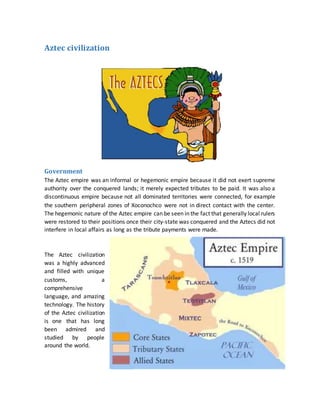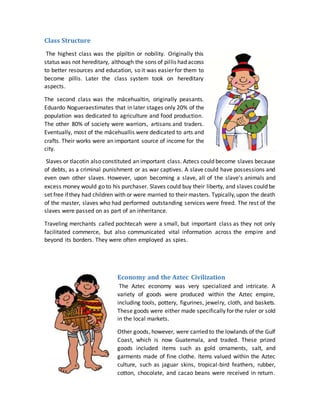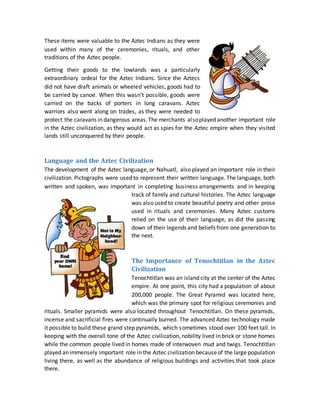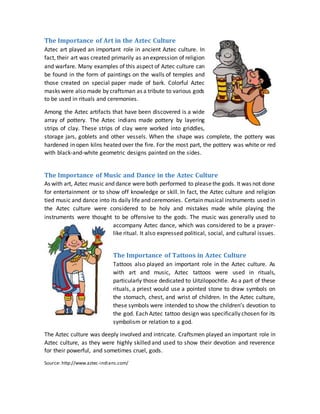The document summarizes key aspects of Aztec civilization in 3 paragraphs:
1) The Aztec empire was an informal empire that did not exert direct control over conquered lands but expected tribute payments. Local rulers were typically restored as long as tributes were paid, showing the empire's hegemonic nature.
2) Aztec society had distinct social classes - nobility at the top, peasants and slaves below, and merchants as an important middle class. Slaves could gain freedom through marriage, children, or outstanding service.
3) The Aztec economy was specialized, producing goods for trade. Merchants played a key role in long-distance trade of valuable goods, acting as spies in unconquered lands






